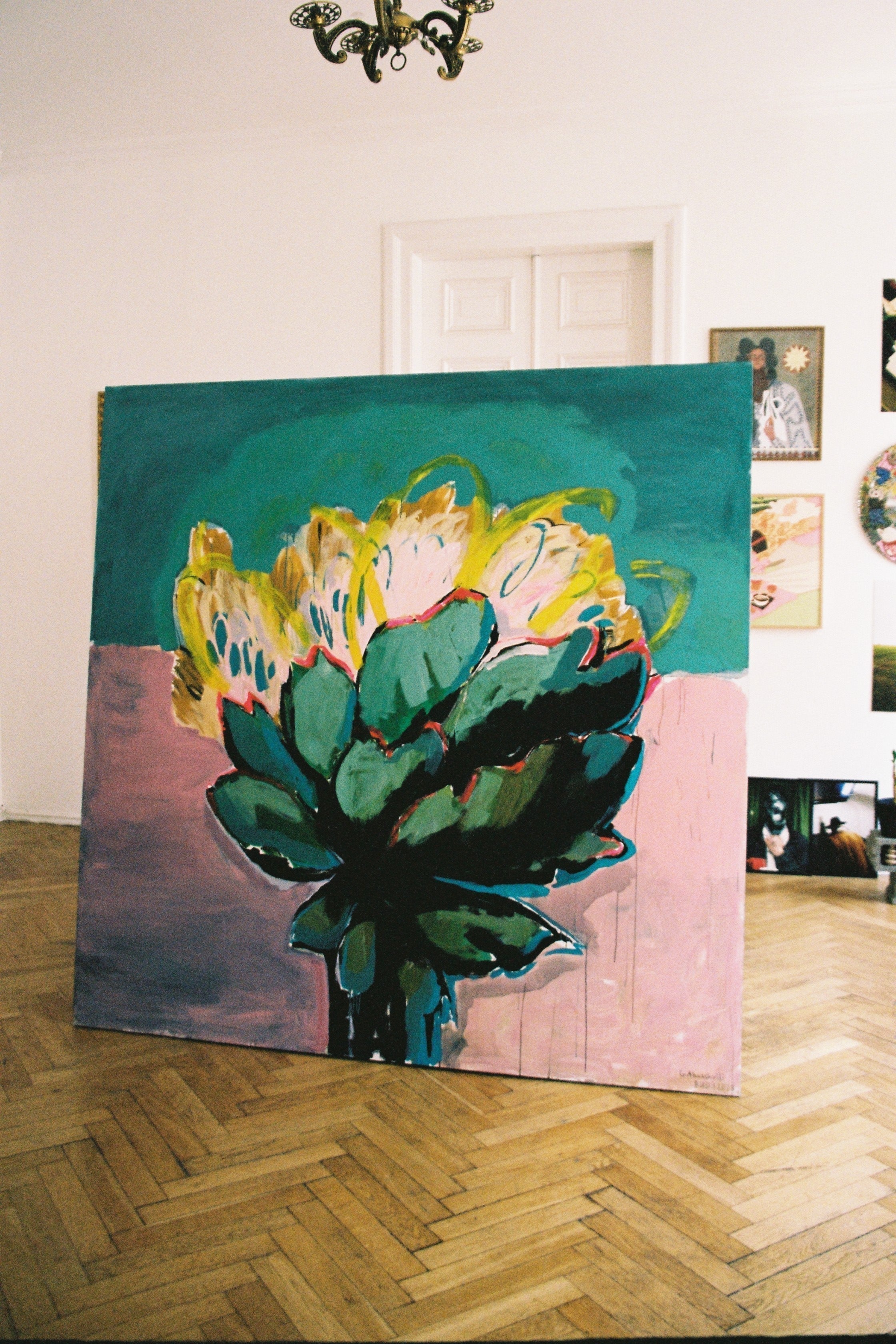Georgian artist Giorgi Abouashvili sees travel as the main source of his creativity. Colors, sounds, the chaos of cities, or the calm of temples are transformed on his canvases into new forms and emotions. In our short interview, answering four questions, Budu speaks about the influence of travel, his upcoming experiments and the interdisciplinary directions he plans to pursue.
Where does each canvas begin and how does your travel experience shape this process?
For me, every canvas begins with an invisible sound or emotion, something that cannot yet be put into words. Often, it is an impression from travel, it could be a color harmony, the noise of a street, the movement of water, or simply the different tone of sunlight. For example, when I first saw the contrast between golden yellow and deep blue at the market in Oaxaca, Mexico, it left such a strong impression that this kind of dialogue between colors often appears in my work. Travel is an opening for me: every new city or landscape gives me its own “language,” which I then translate onto the canvas.
Which city or travel story has inspired you the most and did it turn into specific artworks?
What I remember most vividly are the coastal cities of Brazil - Salvador and Rio de Janeiro. There, nature and urban chaos merge in such a way that the city itself feels like a living being. The colorful favelas and the endless blue of the ocean became for me a metaphor of human energy and nature’s harmony. This experience directly led to several works filled with dynamism, uneven lines, and clashes of intense colors. Cambodia’s Angkor temples also had a profound impact on me. I felt the accumulation and erosion of time in them, which pushed me into a new dimension of abstraction.
Looking to the future, what new directions or experiments do you plan and where do you see your art in five years?
I feel that my next step will be larger in scale and more interdisciplinary. I want painting to merge with space, music and perhaps even digital media, so that the experience encompasses the entire environment. I plan to experiment with textures and natural materials, because I believe the connection between nature and art should be deepened further. Five years from now, my art will likely exist not only in galleries but also in real spaces, as an immersive experience that directly engages the viewer in the emotions that my travels through Mexico, Brazil, the United States, or Cambodia have left me with.
